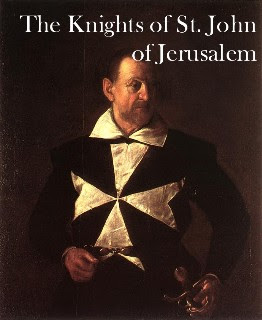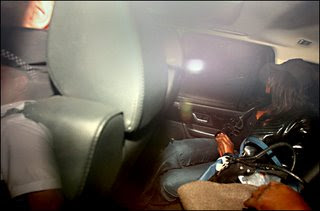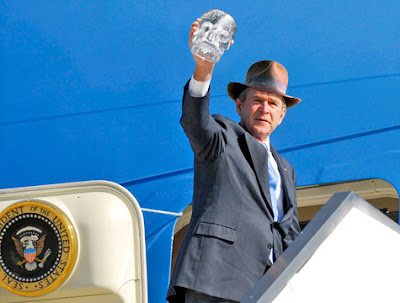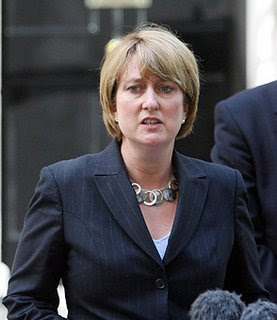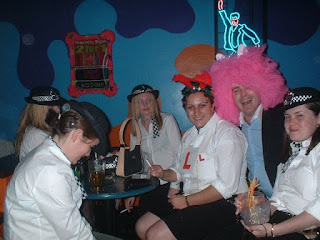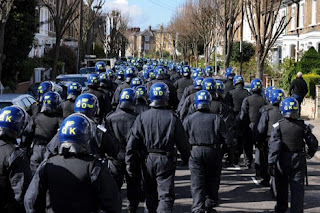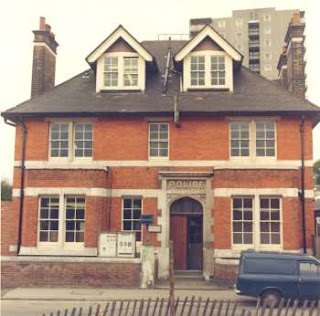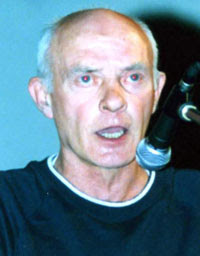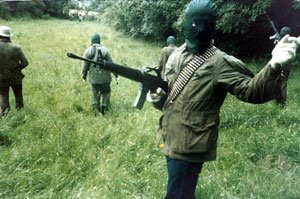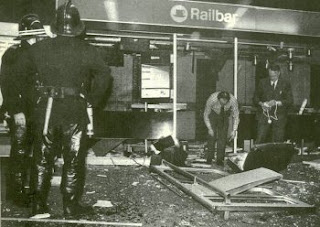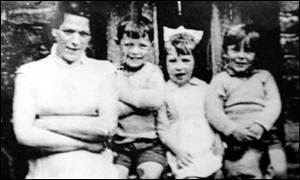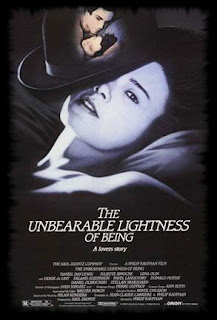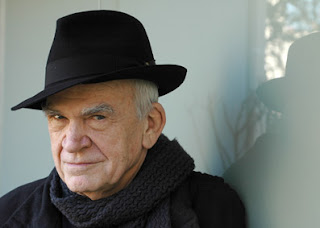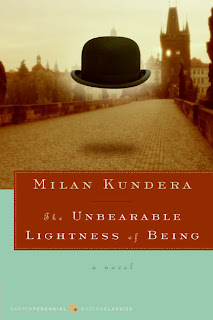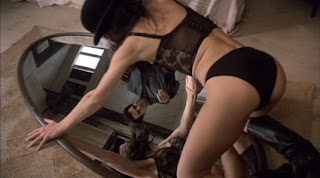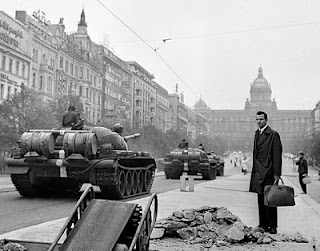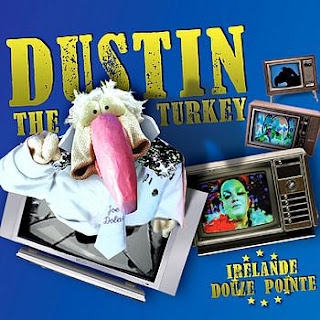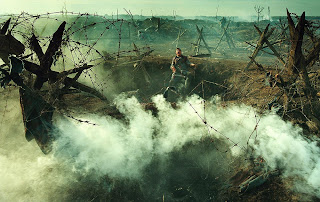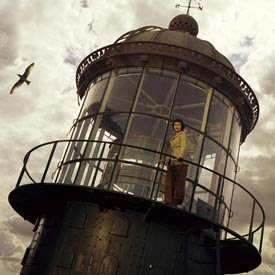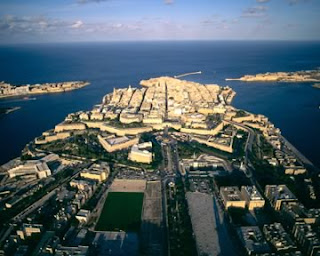 Valletta - A UNESCO World Heritage Site
Valletta - A UNESCO World Heritage Site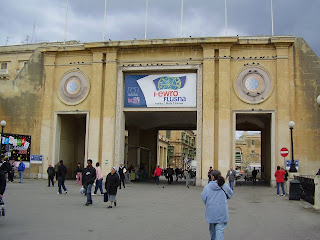 Victory Gate Valletta
Victory Gate VallettaValletta, Malta’s capital and a UNESCO World Heritage site, is nothing short of an open-air museum. It is a living experience of Baroque architecture, a monument donated by the Knights of St John nearly five centuries ago. Throughout the years, Valletta has welcomed emperors, heads of state, artists and poets and is now the permanent seat of the Maltese government. It is the most complete example of a planned fortified city and its setting between two natural harbours is impressive and its richness is contained in a street plan grid of twelve streets by nine. The capital of Malta is inextricably linked to the history of the military and charitable Order of St John of Jerusalem. It was ruled successively by the Phoenicians, Greeks, Carthaginians, Romans, Byzantines, Arabs and the Order of the Knights of St John. Valletta’s 320 monuments, all within an area of 55 ha, make it one of the most concentrated historic areas in the world.
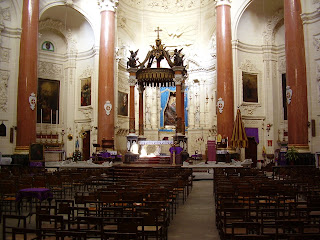 Carmelite Rotunda
Carmelite Rotunda The Grand Harbour (in Maltese: Il-Port il-Kbir) is a natural harbour on the island of Malta. It has been used as a harbour since at least Roman times. The name Malta itself comes from the Phoenician “Maltae” meaning a sheltered anchorage and this is what it still is today. The natural harbour has been greatly improved with extensive docks and wharves, and has been massively fortified. Grand Harbour was the base for the Knights of St John for 268 years, and after their departure became a strategic base for the British for a further 170 years. It was the site in the late 16th century of a devastating tornado that killed 600 people and destroyed a shipping armada. The area was the scene of much of the fighting in the First Siege of Malta when the Turks attempted to eject the Knights of St John. The whole area was savagely bombed during the Second Siege of Malta during World War II, as the docks and military installations around the port were legitimate targets for Axis bombers. However collateral damage wrecked much of Valletta and The Three Cities, and caused large numbers of civilian casualties.
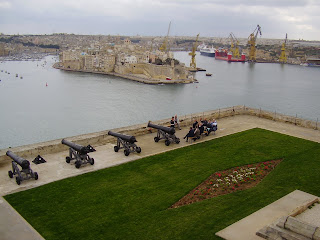 Grand Harbour Bastions
Grand Harbour Bastions
Valletta, The Fortress City, Citta' Umilissima, “a city built by gentlemen for gentlemen” is Malta's capital city: a living, working city, the administrative and commercial heart of the Islands. Valletta is named after its founder, the respected Grand Master of the Order of St John, Jean Parisot de la Valette. The magnificent fortress city grew on the arid rock of Mount Sceberras peninsula, which rises steeply from two deep harbours, Marsamxett and Grand Harbour. Started in 1566, Valletta was completed, with its impressive bastions, forts and cathedral, in the astonishingly short time of 15 years.
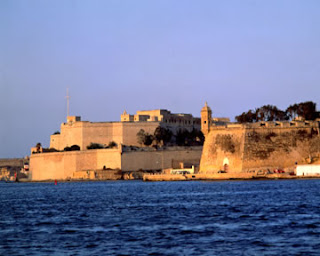 Fort St. Angelo
Fort St. AngeloValletta has many titles, all recalling its rich historical past. It is the “modern” city built by the Knights of St John; a masterpiece of the Baroque; a European Art City and a World Heritage City. Ruled successively by the Phoenicians, Greeks, Carthaginians, Romans, Byzantines, Arabs and the Order of the Knights of St John, it is one of the most concentrated historic areas in the world.
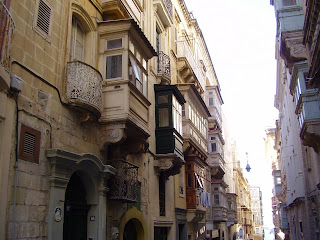 Streetscape
StreetscapeThe city is busy by day, yet retains a timeless atmosphere. The grid of narrow streets boasts some of Europe's finest art works, churches and palaces. Valletta owes its existence to the Knights of St John, who planned the city as a refuge to care for injured soldiers and pilgrims during the Crusades in the 16th century. Until the arrival of the Knights, Mount Sceberras, on which Valletta stands, lying between two natural harbours, was an arid tongue of land. No building stood on its bare rocks except for a small watch tower, called St Elmo, to be found at its extreme end. Grand Master La Valette, the gallant hero of the Great Siege of 1565, soon realised that if the Order was to maintain its hold on Malta, it had to provide adequate defences. Therefore, he drew up a plan for a new fortified city on the Sceberras peninsula.
Pope Pius V and Philip II of Spain showed interest in the project. They both promised financial aid and the Pope lent the Knights the services of Francesco Laparelli, a military engineer, who drew up the necessary plans for the new city and its defences. Work started in earnest in March 1566 - first on the bastions and, soon after, on the more important buildings. The new city was to be called Valletta in honour of La Valette.
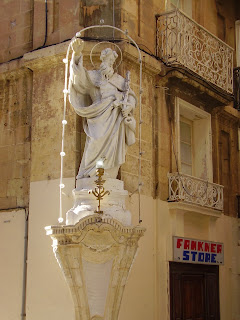 Valletta Street Corner
Valletta Street CornerThe Grand Master didn’t live to see its completion and he died in 1568. His successor, Pietro del Monte continued with the work at the same pace. By 1571, the Knights transferred their quarters from Vittoriosa (Birgu) to their new capital. Architect Laparelli left Malta in 1570. He was replaced by his assistant Gerolamo Cassar, who had spent some months in Rome, where he had observed the new style of buildings in the Italian city. Cassar designed and supervised most of the early buildings, including the Sacra Infermeria, St John's Church, the Magisterial Palace and the seven Auberges, or Inns of Residence of the Knights.
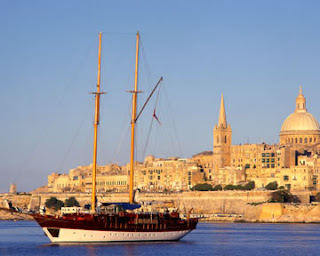 Valletta from Marsamxett Harbour
Valletta from Marsamxett HarbourBy the 16th century, Valletta had grown into a sizeable city. People from all parts of the island flocked to live within its safe fortifications especially as Mdina, until then Malta's capital, lost much of its lure. In the ensuing years, the austere mannerist style of Cassar's structures gave way to the more lavish palaces and churches with graceful facades and rich sculptural motifs.
The new city, with its strong bastions and deep moats, became a bulwark of great strategic importance. Valletta’s street plan is unique and planned with its defence in mind. Based on a more or less uniform grid, some of the streets fall steeply as you get closer to the tip of the peninsula. The stairs in some of the streets do not conform to normal dimensions since they were constructed in a way so as to allow knights in heavy armour to be able to climb the steps.
 Auberge de Castille y Leon
Auberge de Castille y Leon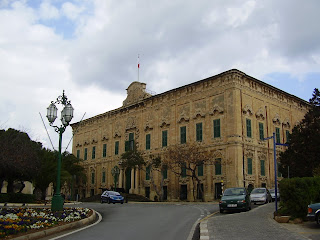
Fast forward a few centuries and the city built by gentlemen for gentlemen came under another siege; this time in the shape of World War II which brought havoc to Malta. Valletta was badly battered by the bombing, but the city withstood the terrible blow and, within a few years, it rose again. The scars of the war are still visible till this day at the site previously occupied by the former Royal Opera House in the heart of the city, a wound that has left Malta’s MPs divided these past 60 years over what should replace it.
Dominating Palace Square, the Grand Master's Palace has always been the house of government in Malta, first by the knights, then the British and now hosts the President’s office. When parliament is not in session you can visit the palace for free, and there is an awful lot to see in here. In the interior of the palace is the famous Council Chamber, adorned with valuable Gobelin tapestries woven in France for Grand Master Ramón Perellos y Roccaf.
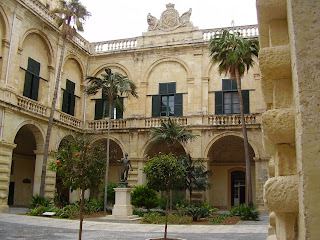 Grand Master's Palace
Grand Master's Palace The other rooms and passages of the palace are splendidly furnished with art objects, old coat of arms and armour. Particularly notable are the former Hall of the Supreme Council of the Knights, which hosts fine frescoes and the Hall of the Ambassadors, where portraits of Grand Masters and European rulers hang. On the basement floor is the Armoury, one of the largest collections of its kind in the world, though reduced to a fraction of its former size by the depredations of the French. Among its principal treasures are a suit of armour made in Milan for the Grand Master, Adrien de Wignacourt (1690-97) and a full-length panoply made for Grand Master Martin Garzes by Sigismund Wold of Landshut.
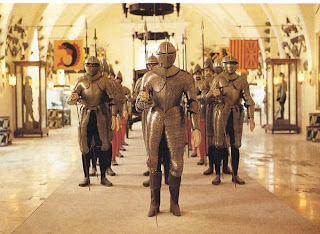 Grand Master's Palace Armoury
Grand Master's Palace ArmouryThe Co-Cathedral of St John is nothing short of a gem and was the spiritual centre of the Knights of St. John.
http://daithaic.blogspot.com/2008/03/knights-of-malta.htmlDescribed as the first complete example of high Baroque anywhere, it epitomises the spiritual and military role of its patrons. The Cathedral is a showcase to Mattia Preti who intricately carved stone wall designs, as well as the painted vaulted ceiling and side altars with scenes from the life of St John. Among the treasures found in the Cathedral are the unique Caravaggio painting depicting the beheading of St John, the extraordinary paving of more than 300 marble tomb slabs (the burial place of several former European princes), and the splendid vaulted central nave with frescoes of Mattia Preti.
In Valletta the Order built the Church of St. John as the Conventual Church of the Order. Although each tongue had its own church, the Conventual church was the location of services that involved all the knights of Malta. Each grandmaster gave a gift to the Conventual Church upon his elevation; upon his death he was buried in the crypt underneath the church. Notable knights were buried under the floor of the church. Napoleon Bonaparte confiscated many of the precious items in the church in 1798 and melted them down for bullion. What remains today, including the empty reliquary of the arm of St. John the Baptist, is on display in the museum of the Conventual Church. Today, the church is operated by the diocese of Malta and has the status of co-cathedral with the Cathedral of Mdina. Visitors are still impressed by the more than 400 inlaid marble slabs that make up the floor of the church. These slabs mark the tombs of the knights.

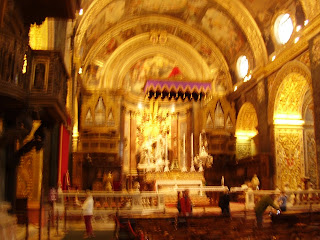 Co-Cathedral of St John
Co-Cathedral of St John Commissioned by the Grand Master, Caravaggio's Beheading of St John was made in 1608 for the chapel of the Co-Cathedral. It is the largest work the artist ever painted (12 feet x 17 feet) and the only one he ever signed. This painting is described as his all-time masterpiece. The painting depicts the moment in Biblical history where St John is beheaded by King Herod to satisfy the blood lust of the seductive dancer, Salome. The scene is the courtyard of a prison and the grisly murder is observed by two other prisoners looking through a grille, while a young woman and an old crone stand ready to take the severed head and put it on the waiting platter. The blood flowing from St John's neck drips towards the bottom of the frame and in its red stream, Caravaggio signed his name. It is the most compelling of paintings and nothing substitutes for seeing in person – the genius is that it does not depict the moment of execution but the aftermath and the indifference of those present to the cruelty done to the Prophet of Jordan. For the “St. John.” Of the Knights of St. John is John the Baptist and also in this cathedral they kept their most precious relic, the hand of John the Baptist, the hand which baptised Jesus of Nazareth.
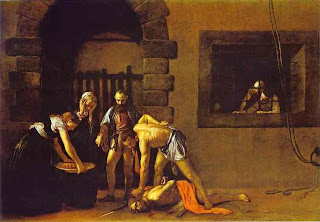 Caravaggio's Beheading of St John - 1608 - Co-Cathedral of St John
Caravaggio's Beheading of St John - 1608 - Co-Cathedral of St John On the oratory's right wall hangs Caravaggio’s smaller painting of St Jerome. Stolen in 1984 and rescued in a dramatic operation some months later, the painting depicts an elderly man sitting with a pen in his hand.
Hosting a vast cultural programme, walking around Valletta you’ll come across an intriguing historical site around every corner: votive statues, niches, fountains and coats of arms high up on parapets. Narrow side streets are full of tiny quaint shops and cafés, while Valletta’s main streets are lined with larger international branded shops for fashion, music, jewellery and much more.
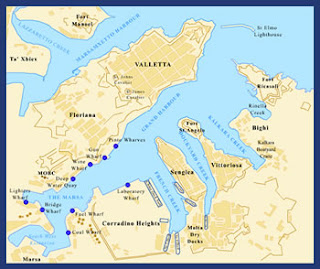
At the end of Valletta is the fortress of St. Elmo, the patron saint of sailors. There are fine views from here across to Malta's Grand Harbour to the Three Cities of Senglea, Vittoriosa and Kalkara. The Grand Harbour is a natural harbour, which is situated on the Northeast coast of Malta. It is separated from Marsamxett harbour by Mount Sceberras, a rocky promontory on which Valletta, Malta's capital city is built. The harbour is the main port of entry for Malta and has container facilities and several dry docks The Grand Harbour has played a major part in Malta's history. It is deep, sheltered and bordered by high stone bastions. Although now quiet and peaceful, it has been the location for fierce battles over the years and was the site of ferocious bombings and huge destruction in World War II. Malta's majestic Grand Harbour is one of the most spectacular ports in the world. A wide stretch of water separating the capital city of Valletta from the historic towns of Three Cities, the harbour has been a hive of activity for over two thousand years. With its imposing fortifications and vast panorama, Grand Harbour is Malta's principal maritime gateway and a popular port-of-call for ships cruising the Med.
 Seaplane taking off in Grand Harbour
Seaplane taking off in Grand HarbourAcross Grand Harbour and facing Valletta are the Three Cities which offer an intriguing insight into Malta and its history. Left largely unvisited, these cities are a slice of authentic life as well as a glimpse into Malta’s maritime fortunes encompassing three distinct deep harbours of their own, French Creek, Dockyard Creek and Kalkara Creek. The Three Cities can rightly claim to be the cradle of Maltese history, as Senglea, Vittoriosa and Kalkara have provided a home and fortress to almost every people who settled on the Islands.
 Vittoriosa and Fort St. Angelo
Vittoriosa and Fort St. AngeloOne of the most important towns in mediaeval Malta, in 1530 Vittoriosa became the first residence on the island of the Knights of St John of Jerusalem, the Knights Hospital's. It was strongly fortified and served as the Knight's defence bastion against the Turks in the Great Siege of Malta in 1565. Its name, formerly Birgu,(derived from the Italian Borgo for 'town') was changed to Vittoriosa to commemorate the victory against the Turks. Vittoriosa served as the Knight's capital until its replacement by the city of Valletta, which was founded by Grand Master Jean de La Valette in 1570. The town continued to develop in the 17th century with commercial facilities and shipyards. Although severely damaged in World War II some of its old fortifications remain, including Fort St Angelo which was built in 870 and renovated and extended in 1530. The Palace of the Inquisitor and most of the 16th century Auberges (lodges of the Knights) also survived. Along the Vittoriosa waterfront the buildings that survived and stand to this day are Caraffa Stores Building, the Palace of the Prud'homme of the Arsenal and the residence of the captain of the Galleys.
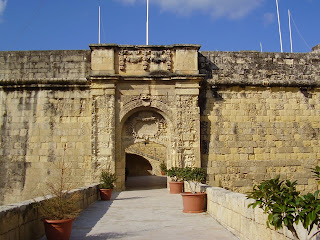 Entrance to Vittoriosa
Entrance to VittoriosaFort St Angelo is the jewel in the crown of Malta's rich military heritage. It stands majestically at the tip of the promontory of Vittoriosa, dominating the Three Cities on the South Eastern side of the Grand Harbour. Its origins are shrouded in the history of the Middle Ages, though some historians would even venture to state that its stands on the site of a fortified Roman settlement. The Order of Malta has recently returned to the island of Malta, after signing an agreement with the Maltese Government which granted the Order the exclusive use of Fort St. Angelo at overlooking the Grand Harbour for a term of 99 years. Located in the town of Birgu, the Fort belonged to the Knights from 1530 until the island was occupied by Napoleon in 1798. Today, after restoration, the Fort hosts historical and cultural activities related to the Order of Malta.
The Inquisitor’s Palace, sited in the heart of Vittoriosa, is one of the very few surviving examples of a style of palace that would have been found all over Europe and South America in the early modern period. Many such buildings succumbed to the ravages of time or became victims of the reactionary power unleashed by the French Revolution against the ancien regime and all it represented. The fact that Malta’s palace, throughout its five centuries of history, always hosted high-ranking officials representing the main ruling powers on the Island helped ensure its survival. The palace also survived the Second World War and the threat of modern development. Although its successive occupants changed much in the structure of the building, the Inquisitor’s Palace remains an architectural gem, representative of the chequered history and European heritage of the Islands.
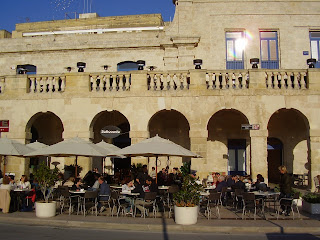
The palace was not built purposely as a residence for the Inquisitor. It was erected in the 1530s as the civil law courts of the Order of St John soon after the Knights arrived in Malta. It continued to serve as law courts until 1571, when the Order transferred its headquarters to Valletta after the siege of 1565. The palace then remained empty, but not for long. Mgr Pietro Dusina arrived in Malta in 1574 as the first general inquisitor and apostolic delegate of the Maltese Islands. The Grand Master offered him the unused palace as an official residence. Almost all successive inquisitors sought to transform the palace into a decent mansion. They all shared the same cultural values of clerical baroque Roman society, and by the mid-18th century they had managed successfully to transform the building into a typical Roman palace.

The Maltese Inquisition, an extension of the Roman Inquisition, began in 1562. Its purpose was to suppress heresy in the Catholic Church in Malta. Protestantism was not widespread in Malta, but Malta's location at the center of the Mediterranean meant that travelers brought different religious ideas into the island. By the seventeenth century, the Maltese Inquisition investigated the use of Muslim magic, brought to Malta by its Muslim slaves. Foreign sailors who blasphemed or Maltese husbands who demanded meat on Friday also found themselves before the Inquisitor. But unlike the Spanish Inquisition, the Maltese Inquisition did not enforce political control. As a result, the Inquisition did not terrorize the lives of the Maltese like it did the Spanish.
Instead, it seems that the Maltese Inquisition existed to monitor the Knights of Malta and to adjudicate between the Grandmaster and the Bishop. The job of Inquisitor of Malta often led to higher positions in the Church. From this post, two Inquisitors became Pope (Alexander VII and Innocent XII) and twenty-two Inquisitors became Cardinals. The Inquisition on Malta lasted until 1798 when Napoleon Bonaparte abolished it.
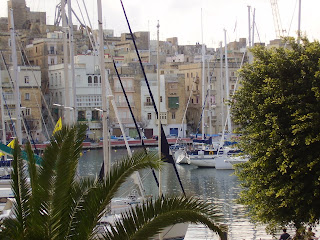 Senglea Waterfront
Senglea WaterfrontThe Maritime Museum in Vittoriosa charts Malta’s maritime history and lore within a Mediterranean context and also illustrates the global nature of seafaring and its impact on society. The Museum is housed in the former British Naval Bakery at Vittoriosa, one of the Three Cities overlooking Grand Harbour. The building, designed by British architect William Scamp, was erected between 1842 and 1845 on the site of the old covered slipway of the Knights of St John. The bakery was the hub of the Victualling Yard and supplied the Royal Navy with its daily requirements of bread and biscuit. After World War II, it was converted into offices and stores and as the headquarters of the Admiralty Constabulary. The building remained part of the naval establishment up to the closure of the British base in 1979.
For almost two hundred years, Malta was the home of the British Mediterranean fleet. The Royal Navy kept a vast establishment on the Islands. The museum presents an overview of Malta as a naval base, and depicts aspects of naval and civilian life, both leisure and work. There is also a wide collection of paintings, photographs, models, uniforms, weapons, instruments and other artefacts that illustrate the history of the Royal Navy in the Mediterranean during the 19th and 20th centuries and attest to the Navy’s impact on the economy and social life on the Maltese islands.
Cottonera, or il-Kottonera, is the term used to describe the suburb which grew out of and behind Fort Saint Angelo and Fort Saint Michael, at the southern shores of Malta's Grand Harbour. This area, also referred to as 'The Three Cities', lies behind the (inland-facing) Cottonera lines; fortifications built during the reign of the stern Grand Master Fra’ Nicholas Cottoner.
Their harbour inlets have been in use since Phoenician times: the docks always providing a living for local people, but also leaving them vulnerable when Malta’s rulers were at war. As the first home to the Knights of St. John, the Cities’ palaces, churches, forts and bastions are far older than Valletta’s. The local communities here celebrate holy days and festas as nowhere else on the Islands. The most spectacular events are the Easter processions when statues of the “Risen Christ” are carried at a run throughout crowded streets.
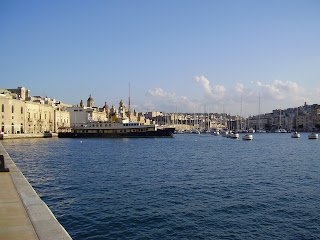 Dockyard Creek
Dockyard CreekDuring the post-war years, Valletta lost many of its citizens who moved out to more modern houses in other localities and its population dwindled to 9,000 inhabitants. However, in the last few years many individuals with a flair for unique architecture are trickling back into the city and investing in old properties. Valletta, the smallest capital of the European Union, is now the island’s major commercial and financial centre and is visited daily by throngs of tourists eager to experience the city’s rich history.
With the war damage, the closure of the British Naval Dockyards in 1979 and the advent of containerisation many of the areas around the three cities were caught up in cycle of decline and dereliction. This is being reversed by the Valletta Waterfront Project which is regenerating the three subsidiary harbours off the Grand Harbour which frame the 3 cities. For example, the modern yacht marina is based just off the Birgu waterfront, which is made up of extraordinary buildings associated with the naval squadron of the Knights of St John. Fort St Angelo still stands proudly at the entrance to Dockyard Creek, witness to nearly one thousand years of history and numerous battles. The old naval bakery today hosts the Malta Maritime Museum where one can admire unique artifacts on display, each shedding light on the links between humans and the sea. The narrow and winding streets of the walled town are charming in themselves and one can stumble across architectural gems such as the Inquisitor’s Palace.
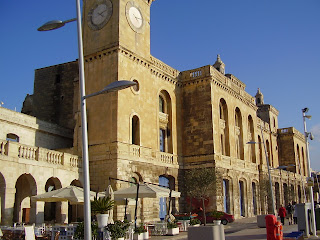 Birgu Waterfront
Birgu WaterfrontFollowing the departure of the Royal Navy, the recent construction of the ultra-modern yacht marina has given a new maritime function to this beautiful historic harbour. Yachts from all over the Mediterranean and beyond now call at this unique destination to make the most of its maritime pedigree and its strategic location in the centre of the Mediterranean Sea.
All these projects are putting the grandeur back into Grand Harbour and bringing much needed new life to a waterfront which provides such an amazing and awe inspiring setting for the baroque masterpiece of Valletta and the uniquely historic and atmospheric three cities.
 travel
travelSee also;
My favourite painting;
http://daithaic.blogspot.com/2011/03/my-favourite-painting_19.html
Mdina and Rabat, Malta
http://daithaic.blogspot.com/2008/06/mdina-and-rabat-malta.html
Neolithic Malta
http://daithaic.blogspot.com/2008/02/neolithic-malta.html
Gozo
http://daithaic.blogspot.com/2008/02/gozo.html